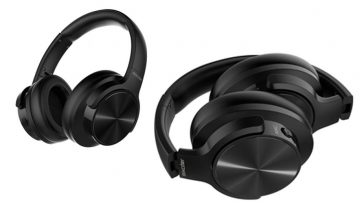
The world is seeing a continuous decline in the learning of languages, particularly in the UK where we’re lucky enough to rely on the universality of English. While I’m a big advocate for studying this or that lingo – at this point, I should say that I’m bilingual – I have to concede that in today’s tech-centric world, English speakers can easily get by as monolinguals. Business travellers might not have the time, after all, to join a language course or spend hours practicing vocabulary on duolingo.
That’s where the Pocketalk Classic comes in, a sleek pocket-sized (hence the name) translator device which translates your voice (or the person you’re chatting with) into one of 74 languages. Note that the device has two modes, “Global” and “China”, and advises that the latter might not offer accurate translations “due to strict regional regulations” in China, with the number of supported languages restricted.
According to Sourcenext, the Japanese consumer software company behind Pocketalk, the gadget “utilises the most robust language engines and cutting-edge cloud technologies” to achieve accurate translations. The device connects to mobile data, wifi (though the fiddly keyboard requires nimble fingers to enter the password) or a personal hotspot to source such translations. It is also embedded with a global SIM with two years of mobile data coverage.
First off, the slender oval-shaped gadget is really simple to use – there are only two buttons, a touchscreen, and an on/off switch at the side – and very lightweight. The Pocketalk also has seven hours of battery life and you can switch on sleep mode if you want to preserve up to ten days battery life.
So how does it work? The main screen shows two languages: on the left is the language that you will be speaking, and the right is the language you want it translated into. To use the device, press and hold down the left button for your language and speak after the beep. Release your finger once you have finished speaking, and the device will instantly speak back in the language on the right-hand side of the screen. The person you’re speaking to can then reply, holding the right-hand button down instead.
The device will also show the written translation in both languages. I tried it out with German, Hebrew, and Spanish speakers, and it worked well in each instance. As a fluent French speaker, I also checked whether the translations to and from English were correct – and they were, for the most part.

The device is best used for casual conversation and simple translations like “I have a reservation for today” or “My train is cancelled”. It becomes less accurate when you start to introduce idioms. AI translation can never really be faultless, with computers unable to pick up on the nuances of a phrase, or multiple meanings of words.
How is it any different to the likes of Google Translate? The written translation is very similar, if not identical, but that’s not really the point of the Pocketalk. The device is useful because it speaks in a fluent accent and can help conversation flow between people who might otherwise need a physical translator. When you click to hear the phrase on Google Translate, by contrast, the voice is very robot-like and pronounces words phonetically at times.
If I’m wearing my linguist hat, I also think that the device could aid in familiarising the user with various languages, and maybe even spark off the desire to learn. You get to hear what the phrases are meant to sound like rather than simply see a string of words that are impossible to pronounce without prior knowledge. This also saves you from mispronouncing words, and coming out with an unintended but humorous interpretation.
The speaker also works well – I tested it out in a room with a fair amount of background noise and it managed to pick up our voices without combining it with the surrounding cacophony. This is thanks to the device’s dual noise-cancelling microphones.
It’s also worth noting that you can create an account on Pocketalk Center – just follow the URL on the device – and this supposedly allows you to check your translation history from a desktop or smartphone, though it didn’t work when I tried this. The website also allows you to create a folder to register frequently used words.
Verdict
This is an easy-to-use and compact device which works well for conversations. I’m not sure, however, that many people would fork out £219 for the device, given that there are various translation apps nowadays, and the free-to-use Google Translate.
The newer version of the device, the Pocketalk Voice Translator, looks more promising – this one has a text-to-translate camera which recognises and translates text and signs, as well as a conversion programme for currencies, temperatures and sizes.
- £219
- pocketalk.net












